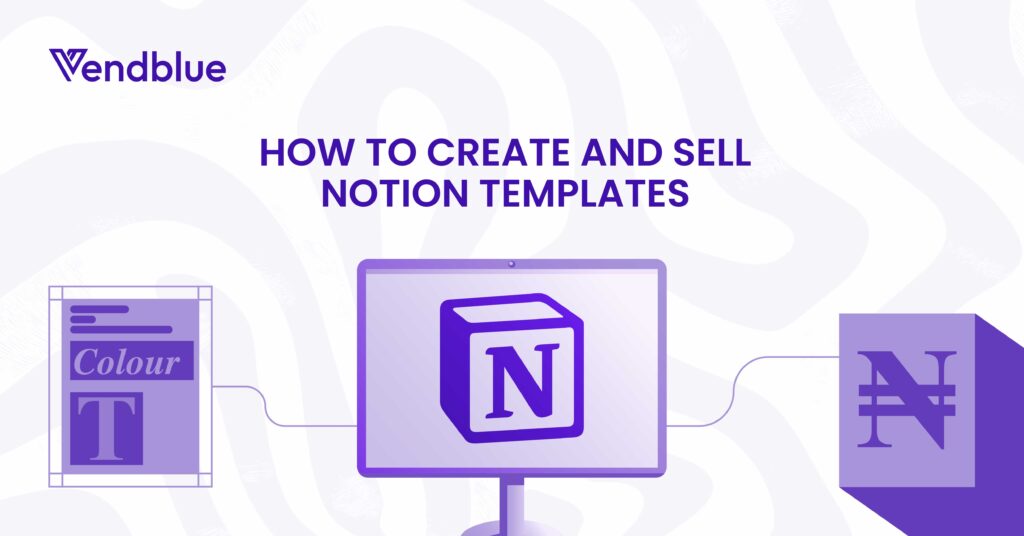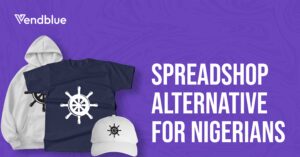Introduction
Notion has quickly become one of the most popular productivity tools, known for its flexibility and powerful features.
As more individuals and businesses adopt Notion, the demand for high-quality templates has surged. Creating and selling Notion templates can be a profitable venture, allowing you to share your expertise and creativity while helping others streamline their workflows.
In this guide, we’ll explore the steps involved in creating and selling Notion templates, from initial research to post-launch strategies.
Understanding Notion
What is Notion?
Notion is an all-in-one workspace that combines note-taking, task management, databases, and collaboration features.
It is highly customizable, allowing users to create tailored solutions for various needs, from personal planning to project management.
Key Features of Notion
- Databases: Organize information with tables, boards, calendars, and lists.
- Note-taking: Create rich-text documents with embedded media, code snippets, and more.
- Task Management: Use to-do lists, kanban boards, and timelines to manage tasks and projects.
- Collaboration: Share pages and workspaces with teams, assign tasks, and comment on content.
Why Notion Templates are Valuable
Notion templates save users time and effort by providing pre-built structures that can be easily customized.
They cater to a wide range of use cases, such as personal planning, business operations, education, and creative projects.
High-quality templates enhance productivity and help users maximize Notion’s capabilities.
Research and Planning
Identifying the Target Audience
Before creating a Notion template, it’s crucial to identify your target audience. Consider who will benefit most from your template.
Are you targeting students, entrepreneurs, content creators, or project managers? Understanding your audience’s needs will help you design a template that provides real value.
Analyzing Market Demand
Research the market to identify popular types of Notion templates. Browse platforms like Notion’s template gallery, Gumroad, and Etsy to see what templates are currently available and which ones are selling well.
Pay attention to customer reviews and feedback to identify gaps in the market and areas for improvement.
Finding Inspiration and Ideas
Look for inspiration from various sources. Explore existing Notion templates, productivity blogs, YouTube channels, and social media groups. Take note of design trends and features that users appreciate. Brainstorm ideas that align with your expertise and interests, and think about how you can add unique value to your templates.
4. Designing Your Notion Template
Basics of Template Design Designing a Notion template starts with understanding the basics of Notion’s interface. Familiarize yourself with blocks, pages, and databases. Each component can be customized, combined, and rearranged to create an efficient and visually appealing template.
Structuring Your Template for Ease of Use Your template should be user-friendly and easy to navigate. Start with a clear and concise main page that links to different sections of the template. Use headers, bullet points, and dividers to organize information. Consistency in design elements like fonts, colors, and spacing can enhance readability and usability.
Using Notion’s Features Effectively Take advantage of Notion’s advanced features to add functionality to your template. Use databases to create dynamic lists, calendars for scheduling, and kanban boards for project management. Experiment with relational databases to link different parts of your template, and use formulas to automate calculations and data analysis.
5. Creating a Unique Template
Ensuring Originality and Uniqueness With many templates available, it’s essential to offer something unique.
Identify a niche or a specific problem that your template can solve better than existing ones. Incorporate unique design elements, innovative layouts, or specialized features that set your template apart from others.
Adding Value Through Functionality and Aesthetics A successful Notion template not only looks good but also functions well.
Ensure that your template is both aesthetically pleasing and highly functional. Use appealing visuals like icons and images to enhance the design.
More importantly, ensure that every feature of your template adds real value and improves the user experience.
Incorporating User Feedback and Testing Before launching your template, gather feedback from potential users.
Share your template with a small group of testers and ask for their opinions on usability, design, and functionality.
Make necessary adjustments based on their feedback. This process helps in refining your template and ensuring it meets users’ needs.
6. Branding Your Templates
Creating a Cohesive Brand Identity Establishing a strong brand identity is crucial for standing out in the market.
Choose a brand name, logo, and color scheme that reflect your style and the type of templates you create.
Consistent branding across all your templates, promotional materials, and online presence helps build recognition and trust with your audience.
Designing Appealing Visuals and Mockups High-quality visuals are key to attracting potential buyers. Create professional mockups of your templates to showcase their features and design.
Use tools like Canva or Figma to create these visuals. Include screenshots, explainer videos, and detailed descriptions to give users a clear understanding of what they are purchasing.
Writing Compelling Descriptions and Documentation A well-written description can make a significant difference in your sales. Clearly explain the features, benefits, and use cases of your template.
Include detailed instructions on how to use the template, and provide any necessary documentation or guides. This helps users understand how your template can solve their problems and how to get the most out of it.
7. Setting Up for Sale
Choosing the Right Platform Selecting the right platform to sell your Notion templates is crucial for reaching your target audience. Popular platforms include:
- Vendblue: A simple and popular choice for digital products.
- Etsy: Known for handmade and digital products, ideal for reaching a wide audience.
- Personal Website: Provides complete control over branding and customer experience.
Evaluate each platform’s features, fees, and audience to determine the best fit for your business.
Pricing Strategies for Your Templates Determining the right price for your Notion templates involves balancing value and affordability. Consider the following strategies:
- Competitive Analysis: Research the prices of similar templates in the market.
- Value-Based Pricing: Price based on the value your template provides.
- Tiered Pricing: Offer different versions of your template at varying price points.
Experiment with different pricing models to see what works best for your audience.
Payment Methods and Handling Transactions Ensure you have a reliable payment processing system in place. Platforms like Gumroad and Etsy handle transactions for you, but if you’re using a personal website, you’ll need to set up a payment gateway like PayPal, Stripe, or Square. Make sure to test the payment process thoroughly to avoid any issues for your customers.
8. Marketing Your Templates
Building an Online Presence Creating a strong online presence is essential for marketing your Notion templates.
Start by establishing profiles on social media platforms like Instagram, Twitter, LinkedIn, and Pinterest. Share valuable content related to Notion and productivity to attract followers and build a community around your brand.
Leveraging Email Marketing and Newsletters Email marketing is a powerful tool for reaching your audience directly.
Build an email list by offering a free Notion template or resource in exchange for email sign-ups. Send regular newsletters with updates, tips, and promotions to keep your audience engaged and informed about your latest products.
Utilizing SEO and Content Marketing Search Engine Optimization (SEO) is crucial for driving organic traffic to your website.
Optimize your product listings, blog posts, and other content with relevant keywords related to Notion templates.
Create valuable content like blog posts, tutorials, and videos that address common problems and showcase how your templates can help solve them.
9. Launching Your Product
Preparing for the Launch A successful product launch requires careful planning and preparation.
Create a launch checklist that includes tasks like finalizing your template, creating promotional materials, scheduling social media posts, and setting up your sales platform. Ensure everything is ready well before the launch date.
Creating Buzz and Anticipation Generate excitement for your launch by teasing your product on social media and through your email list.
Share sneak peeks, behind-the-scenes content, and countdowns to build anticipation. Consider offering a pre-order discount or early access to your email subscribers to incentivize sign-ups and engagement.
Managing the Launch Day Effectively On launch day, monitor your sales and social media channels closely. Be prepared to answer questions, address any issues, and engage with your audience. Post updates and thank your customers for their support.
A smooth and well-managed launch can lead to positive reviews and word-of-mouth referrals.
10. Post-Launch Strategies
Providing Excellent Customer Support After your template is launched, maintaining good customer support is key to retaining customers and generating positive reviews.
Respond promptly to customer inquiries and provide clear, helpful instructions. Offer assistance through various channels such as email, social media, or a dedicated support page.
Gathering and Acting on Customer Feedback Collect feedback from your customers to understand their experience and identify areas for improvement.
Use surveys, reviews, and direct communication to gather insights.
Act on the feedback by making necessary updates to your templates, adding new features, or creating additional resources.
Updating and Improving Your Templates Regularly update your templates to keep them relevant and valuable.
Incorporate user feedback, fix any issues, and add new features based on market trends and user needs.
Offering updates shows that you are committed to providing a high-quality product and can help in building customer loyalty.
11. Scaling Your Business
Expanding Your Product Line To grow your business, consider expanding your product line with new Notion templates or complementary products.
Identify other needs within your target audience and create templates that address those needs.
Offering bundles or themed collections can also attract more customers and increase sales.
Collaborating with Other Creators Partnering with other creators can help you reach a broader audience and add value to your offerings.
Collaborate on joint projects, cross-promote each other’s products, or create complementary templates that work well together.
Collaboration can also provide new perspectives and ideas for your business.
Exploring Additional Revenue Streams Diversify your income by exploring additional revenue streams. Consider offering consulting services, creating online courses, or hosting webinars and workshops related to Notion and productivity.
These services can provide valuable insights and additional support to your customers while generating extra income.
12. Legal and Financial Considerations
Understanding Licensing and Copyright Ensure that your templates comply with licensing and copyright laws.
If you use third-party assets (e.g., images, icons), make sure you have the right to use them commercially.
Clearly state the licensing terms for your templates, specifying how customers can use, modify, and distribute them.
Managing Taxes and Finances Properly manage your finances to ensure long-term success. Keep track of your income and expenses, and set aside money for taxes.
Consider using accounting software or hiring an accountant to help with financial management. Understanding your tax obligations and planning accordingly will prevent any legal or financial issues.
Protecting Your Intellectual Property Protect your templates and brand by registering trademarks and copyrights where applicable.
This can help prevent unauthorized use or distribution of your products. Additionally, consider implementing measures to safeguard your digital products, such as using watermarks, encryption, or access controls.





